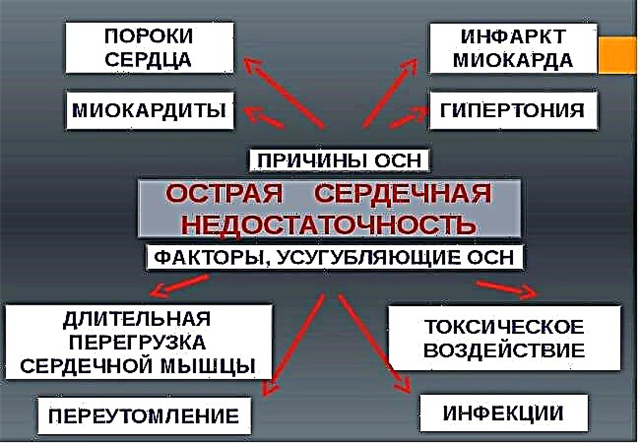Any change in the child's breathing should alert the parents. There are many reasons for the disorder of the respiratory function. To determine the root cause of the deterioration of the condition, it is necessary to pay attention to the frequency, depth of breathing, sounds when inhaling, exhaling, check the patency of the nasal passages. If a child grunts his nose, this is a cause for concern, since normally breathing in children is quiet and is carried out through the nasopharynx.
 Due to the purification and warming of the air in the nasopharynx, it enters the lower respiratory tract ready-made, which prevents irritation and inflammation of the mucous membrane. Laryngitis is considered the most dangerous in childhood, since one of its complications is laryngospasm. It occurs against the background of swelling of the vocal cords, laryngeal mucosa, as a result of which suffocation develops.
Due to the purification and warming of the air in the nasopharynx, it enters the lower respiratory tract ready-made, which prevents irritation and inflammation of the mucous membrane. Laryngitis is considered the most dangerous in childhood, since one of its complications is laryngospasm. It occurs against the background of swelling of the vocal cords, laryngeal mucosa, as a result of which suffocation develops.
Why do babies get sick less? Babies up to one year old are much less likely to suffer from a runny nose, since the body still contains immune components transmitted from the mother. In addition, the child's environment is limited by the parents and a few neighbors. With the beginning of a visit to kindergarten, the risk of infection grows hundreds of times, so a runny nose can be observed 4-6 times a year.
There are many reasons for the appearance of sniffing in a child, they differ in strength and duration of exposure. All causes can be conditionally divided into infectious and non-infectious. Now let's take a closer look at each group.
Infectious causes
Among the most common pathogens, a viral and bacterial infection should be distinguished. Fungal lesions of the nasopharyngeal mucosa are rarely diagnosed. It is often detected in children with severe somatic pathology or severe immunodeficiency. In addition, the activation of fungal pathogens may be preceded by a long course of antibiotic therapy, which disrupts the composition of the microflora of the nasopharynx.
ARVI
Viral pathogens are transmitted mainly by air when communicating with a sick person. After settling on the mucous membrane of the nasal passages, the virus penetrates deep into the tissues and begins to secrete toxin. The consequence of this is swelling of the mucous membrane and paresis of the blood vessels.
Congestion and tissue inflammation lead to a runny nose. The first stage is characterized by:
- sneezing;
- slight nasal congestion. It can be one-sided and change depending on the position of the body. Lying on its side, shortness of breath is observed through the inferior nasal passage;
- lacrimation;
- aching joints, muscles;
- chills;
- subfebrile condition;
- lethargy;
- decreased appetite;
- restless sleep.
Further, rhinitis passes into the second stage, which manifests itself:
- profuse rhinorrhea. Discharge of a watery consistency, transparent. The child sniffs, trying to keep the snot in the nasal passages;
- complete nasal congestion;
- fever 38-39 degrees;
- restless sleep;
- malaise;
- capriciousness.
The third stage is considered final. The snot becomes more viscous, with a yellow tint, a nasal voice appears. A runny nose completely disappears after 10 days.
If the snot lasts more than 10 days, has a green tint, and hyperthermia persists, sinusitis should be excluded.
Secondary bacterial infection occurs at the third stage, when the discharge is thick. This promotes the active reproduction of microbes.
Sinusitis
The cause of sinusitis, ethmoiditis, frontal sinusitis can be a chronic infection in the nasopharynx or an untreated viral rhinitis. Severe swelling of the mucous membrane disrupts the outflow of mucus from the paranasal cavities, which leads to its accumulation and impairs air circulation.
 Bacterial toxins, together with dead immune cells, form a thick mass with an unpleasant odor and a green tint. Inflammation of the mucous membrane of the paranasal sinuses is accompanied by:
Bacterial toxins, together with dead immune cells, form a thick mass with an unpleasant odor and a green tint. Inflammation of the mucous membrane of the paranasal sinuses is accompanied by:
- high fever;
- headache;
- purulent discharge;
- severe intoxication;
- pain when pressing on points in the projection of the paranasal cavities.
In severe cases, when drug therapy does not lead to the desired result, sinus puncture can be performed to aspirate purulent contents. Thanks to the sanitation procedure, the infectious focus is gradually cleared.
Treatment consists in prescribing:
- systemic antibacterial drugs;
- antimicrobial solutions for rinsing the nasopharynx;
- herbal medicines (Sinupret);
- intranasal drops with a vasoconstrictor effect (Lazorin);
- mucolytics (Rinofluimucil), the action of which is aimed at reducing the viscosity of mucus and facilitating its excretion;
- saline solutions for rinsing the nasal cavities.
After the end of the acute phase of the disease, physiotherapy procedures can be carried out. They increase the effectiveness of medications and accelerate recovery. If the intake of drugs is completed earlier than the time recommended by the doctor, there is a risk of chronic inflammation.
Non-infectious factors
Among the non-infectious causes, it is worth highlighting allergic reactions, an unfavorable environment, side effects of medications, adenoids, polyps and structural defects in the nasal passages.
Allergy

Why does snot flow from the nose of children, and is severe congestion worried? An allergic reaction can develop after inhalation of pollen, wool, dust, strong odors, the use of citrus fruits, chocolate, and the use of various hygiene products.
The specific reaction of the immune system to environmental factors may be due to a genetic predisposition, autoimmune diseases, or lymphatic-hypoplastic diathesis. Symptomatic allergy manifests itself:
- watery rhinorrhea;
The difference between allergies is the presence of clear nasal discharge, which, unlike infectious discharge, does not become thick and yellow.
- lacrimation;
- itchy eyes, nose, skin;
- cough;
- swelling of tissues;
- skin rashes;
- nasal congestion;
- sneezing.
To eliminate unpleasant symptoms, it is necessary to stop contact of the child with the allergen. If children develop an allergic reaction to pollen, prophylactic antihistamine therapy should be started two weeks before flowering.
In case of ineffectiveness of medicines, severe course of allergy, the question of carrying out specific hyposensitization is considered. Long-term exposure to an allergic factor on the body increases the risk of developing bronchial asthma. If the allergen is aggressive enough, the child's condition may deteriorate sharply with the development of Quincke's edema or anaphylactic shock.
Ecology
Cleansing of the nasal mucosa is carried out with the help of cilia, which are in constant motion, and mucus produced by the glands. With an increased concentration of chemicals, combustion products, dust in the air, the purifier cannot cope with the intense attack of irritants.
The consequence of this is an inadequate response of the local blood vessels. They expand, the liquid part of the blood comes out of the bloodstream, due to which tissue edema occurs, and severe rhinorrhea is noted.
A child constantly sniffles if he lives in an area with an unfavorable environmental situation, for example, near an industrial area. Dustiness in the nursery also predisposes to the development of vasomotor rhinitis.
Medications
To combat snot, many use nasal sprays with a vasoconstrictor effect.Their action is aimed at reducing the diameter of local blood vessels, which makes it possible to eliminate swelling of the mucous membrane and mucous discharge.
If you use such medications for a long course, in high doses, the risk of addiction increases. With each subsequent instillation of the nose, a larger volume of the drug is required to achieve the initial effect.
Sometimes after instillation of a vasoconstrictor drug, the opposite result is observed (increased rhinorrhea), which indicates the development of drug rhinitis.
Adenoids, polyps
Why do children sniff? Adenoids are most often diagnosed at the age of 3-8 years. Hypertrophy of the tissue of the nasopharyngeal tonsil makes it difficult for air to pass through the nasopharynx, which causes the child to breathe through the mouth.
Depending on the degree of lymphoid proliferation, drug therapy or surgery may be prescribed. With inflammation of the tonsils, adenoiditis develops. Hypertrophied tissue can accumulate infection, thereby maintaining chronic inflammation.
As for polyps, they reduce the diameter of the nasal passages, thereby impairing the passage of air. Insufficient ventilation of the nasal cavities contributes to the activation of microbes and inflammation of the mucous membranes.
When sniffing, children try to keep snot in the nasal passages, which is highly undesirable. Parents need to monitor the patency of the nose, regularly clean it with saline solutions. After rinsing, you should blow your nose well to prevent the accumulation of secretions.
The appearance of rhinorrhea is also promoted by mucosal trauma by a foreign object, congenital, traumatic defects of the nasal passages. ENT diseases are often diagnosed in debilitated children with severe infections or autoimmune diseases.



